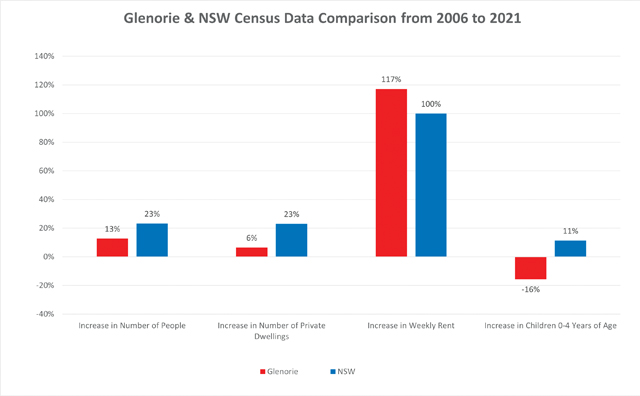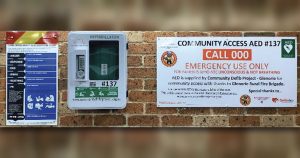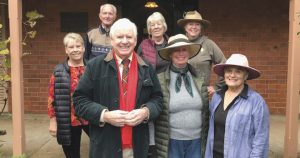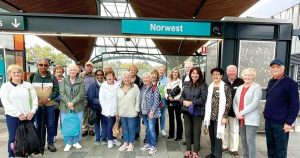In the second half of last year, the Australian Bureau of Statistics starting releasing some of the initial 2021 Census data. A comparison of the 2006 and 2021 Census data has identified a number of interesting trends in Glenorie over this last 15 year period.
Glenorie is one of the most unique rural villages in NSW and is lucky to have a great mix of Sydney’s rural and urban lifestyles. It has a great rural character exemplified by its spectacular natural environment, abundance of significant flora and fauna communities, beautiful rural properties, idyllic RSL club and Australia’s best bakery being the stunning Glenorie Bakery in the heart of the village. Glenorie is also part of the Sydney metropolitan area and is fortunate to be serviced by a Woolworths supermarket, primary school, medical centre, post office, dentist, beauty salons, hairdressers, Glenorie Pizzeria, Village Thai, Chicken Fish Takeaway and a range of village shops which have continued to improve greatly over the last 15 years. It is also the only rural village in the Hills Shire Council LGA to be serviced by a reticulated sewer system.
The latest 2021 Census data has highlighted the following trends over the last 15 years in Glenorie as compared to greater NSW, including:
1. Lower Population Increase – in 2021, the population of Glenorie was 3,792 which is an increase of 429 people or 13% compared to 2006. In comparison, the overall population of NSW increased by 1,522,984 or 23% over this same period which is almost double the rate of growth in Glenorie.
2. Increased Median Age – in 2021, the median age in Glenorie was 42 years which is a substantial increase from 2006 when the median age was only 38 years. In comparison, the median age in NSW in 2021 was 39 years.
3. High Proportion of Residents Born in Australia – In 2021, 76.5% of the residents in Glenorie were born in Australia compared to only 65.4% of residents in NSW indicating a significantly higher number of Australian born residents in Glenorie.
4. Lower Supply of New Dwellings – in 2021, the total number of private dwellings in Glenorie was 1,234 which is an increase of 75 dwellings or 6% compared to 2006. In comparison, the number of private dwellings in NSW increased by 23% over this same period. This indicates that the supply of new housing in NSW was approximately 383% greater in NSW as compared to Glenorie.
5. High Rental Growth – In 2021, the median weekly rent in Glenorie was $543/week which has increased from $250/week in 2006 which is a 117% increase over this period. In comparison, the median weekly rent for NSW has increased from $210/week in 2006 to $420/ week in 2021 representing an increase of 100% over this period.
6. Significant Decline in Children – the number of children aged between 0-4 years has declined from 205 children in 2006 to 173 children in 2021 representing a decline of 16%. In comparison, in NSW the number of children aged between 0-4 years has actually increased by 11% over this same period. This is a very significant statistic showing falling numbers of young children in Glenorie whilst the number of young children in NSW is growing.
7. Low Housing Choice – in 2021, the proportion of housing which is separate housing comprised 98.3% and the proportion of housing which was a townhouse/apartment/etc was only 0.14% in Glenorie. In comparison, in NSW the proportion of housing which is separate housing was 65.6% and the proportion of housing which was a townhouse/apartment/etc was 33.4%. This indicates that there was limited housing choice in Glenorie as compared to the rest of NSW.
8. Low Number of 1 Bedroom Dwellings – In 2021, there were 148 people living by themselves as single person households in Glenorie. At the same time, there were only 24 one-bedroom dwellings available in Glenorie. This indicates that there are a large number of people living by themselves in Glenorie in large houses.
The 2021 Census data has identified a number of interesting trends in Glenorie and NSW, many of which relate to housing supply. The fact that there has been a 16% decline in the number of young children in Glenorie and that new housing supply in NSW was almost 4 times greater in NSW as compared with Glenorie has changed the demographic profile.
If these trends continue over the next 15 years, we could expect a higher increased median age of residents, higher proportion of Australian born residents, lower number of young children and higher rents. Glenorie is undoubtedly one of Sydney’s best rural villages and it will continue to evolve in many ways in the coming years. It is useful for the community to consider the statistics to consider what type of future demographics it prefers.
The latest statistics are available to view at https://www.abs.gov.au/census/find-census-data/quickstats/2021/1
– Anthony Aiossa










